Korean Royal Tombs Sites
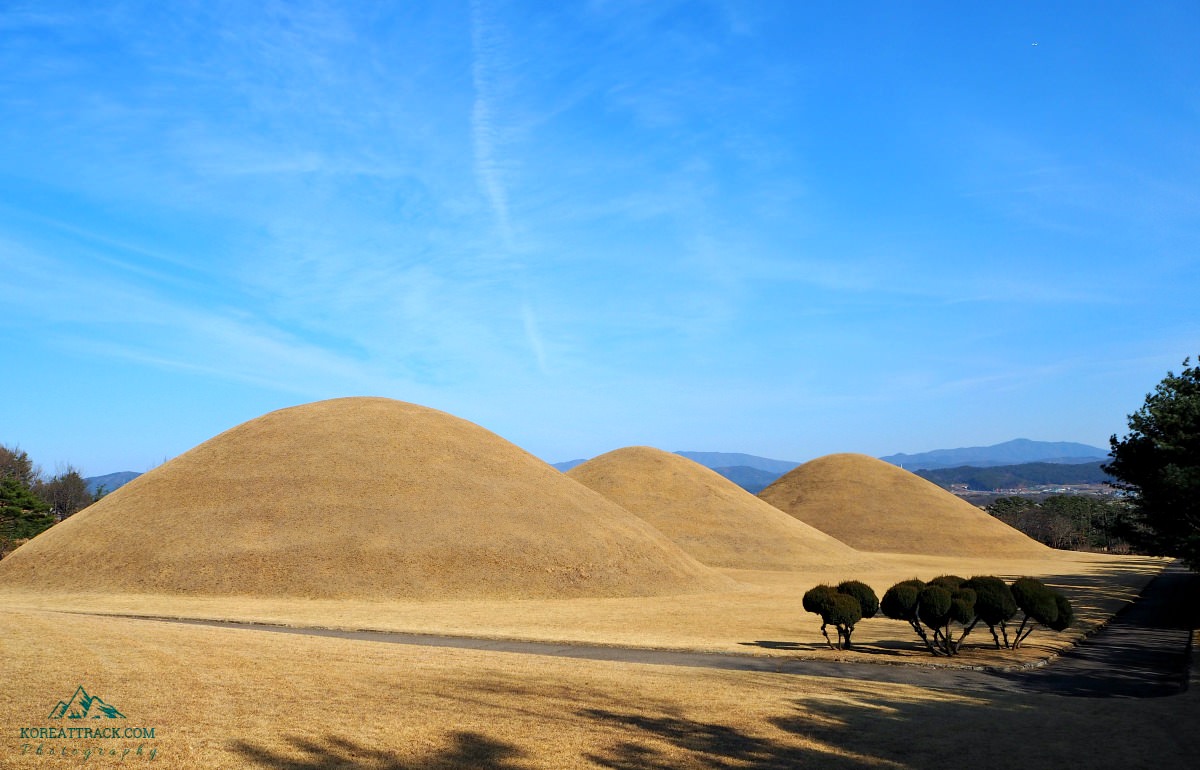 Mounds located nearby King Muyeol's tomb in Gyeongju City
Mounds located nearby King Muyeol's tomb in Gyeongju CityKorean Royal Tombs
Korean Royal Tombs are part of South Korea's tourist attractions. The royals' lives were fascinating as much as intriguing to learn. The popular Korean soap operas include the dramas and stories based on the real characters, such as the kings and queens in the past.
In this article, you will see most of the famous royal tombs or burial sites in this country. Most of the sites have been recently improved by making them not only monuments or burial places but also as memorial parks.
Below, you will find specific tombs and burial sites, each of the links to pages that describe further details. The individual pages or articles on this website include the means and mode of transport when you decide to get there.
So, here we go...
Goguryeo Burial Sites
The Complex of Goguryeo Tombs (고구려 고분군) is also located in North Korea. There are about thirty or so tombs in the area, which is not considered a UNESCO World Heritage Site.
These tombs are significant because they are pretty much all that remain from the Goguryeo Era.
The monuments itself are essential, but the murals within the graves and the items buried along the tombs present a unique insight about Goguryeo's life.
Goryo Dynasty Tombs
The Royal Tombs of the Goryo Dynasty (고려왕릉) are located in North Korea. The capital city of the Koryo Dynasty was Kaesong (개성), which is located in present-day North Korea.
Not all tombs have been identified, but we know that some of the graves belong to deceased Goryo Kings and Queens. Some of the graves are in poor shape because the North Korean government has neglected them.
But the ones that are properly maintained have various stone guardians that signify they are protecting them.
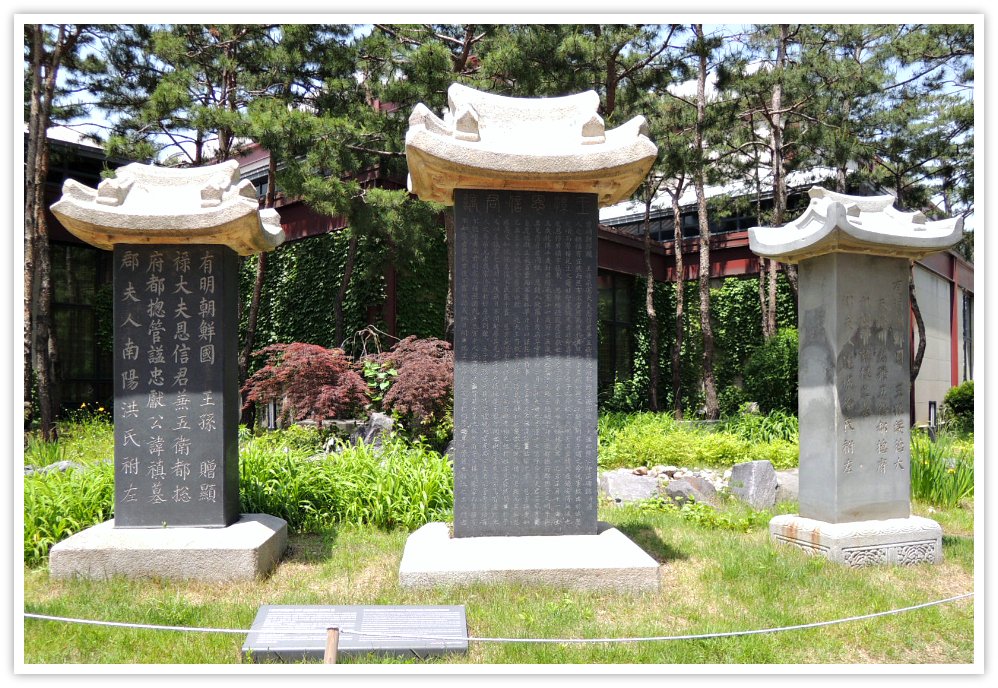 Tombstones of royals located beside Seoul Arts History Museum
Tombstones of royals located beside Seoul Arts History MuseumJoseon Dynasty Royal Tombs
The Royal Tombs of the Joseon Dynasty (조선왕릉) is located in Gyeonggi Province (경기도), Gangwon Province (강원도) and Seoul (서울).
The Royal Tombs of the Joseon Dynasty were designated and inscribed on the UNESCO World Heritage List on the 30th of June 2009. The Seolleung and Jeongneung Royal Tombs site is one of those enlisted on the UNESCO List.
Briefly, the Joseon Dynasty lasted 519 years, which embraced the Confucian ideology as its pillar in ruling society. One of the most distinctive features of Confucianism is the form of respect and ancestral worship. The burial sites' characteristics and physical arrangements attest to filial piety and ancestral worship considered very important in Confucianism.
Due to that practice and belief, all forty-two royal tombs have been preserved, retained at their original sites, and while some suffered minor damages, none of them is totally destroyed.
One of the exciting features of the royal tombs is that they were all set to achieve harmony with the traditional Korean architecture and their beautiful natural environment.
Locations and Types of Royal Tombs
According to studies, there are 120 royal tombs of the Joseon royal family. These burial sites are divided into three types: neung, won, and myo. Of the 120 tombs, there are 42 neung, 14 won, and 64 myo.
A 'neung' is the tomb of the king or queen.
A 'won' is for the crown prince, crown princess, and the king's parents.
A 'myo', on the other hand, is a tomb for royal family members who have lesser status, which is also used for the ordinary people's graves.
Out of the 42 neung, only two of them are located in North Korea (Jereung of Honorary Empress Sinui, first consort to King Tejo, and Hureung of King Jeongjong and Queen Jeongan in Kaesong). All 40 neung are in South Korea.
Facilities of the Joseon Royal Tombs
Inside the royal tomb sites, you will find architecture and structures, and other items arranged so that they are in harmony with the landscape. Looking at the photo, you will find three main areas: burial area, ceremonial area, entrance area. Details below...
- Tomb keeper's house. It was used to prepare for the rites.
- Bridge over the forbidden stream. This serves as the boundary between the secular and the sacred world.
- Red spiked gate. The gate signifies the gateway to the sacred area; has two round pillars connected by horizontal bars with spikes.
- Spirit Road and King's Road. These two rock-paved pathways were built for the rite attendant (who carries incense and written prayers) and the king who performs the rite.
- Stele Shed. This houses the stole steles or tombstones inscribed with the achievements of the deceased buried on this tomb.
- T-Shaped Shrine. This building is where ancestral ceremonial rites are performed and where you can find the tablets of the dead.
- Stone Figures of Military Officials. The figures function as symbolic guards of the dead with their long swords.
- Stone Figures of Civil Officials. You will see them holding a scepter and stand facing each other with the stone lantern between them.
- Burial Mound. It is where the deceased is buried and is also called the "upper tomb" as it is elevated above other spaces in the site.
- Bent Wall. It serves as protection of the mound for the back and sides only. The front part is open and facing the ceremonial shrine and entrance area of the whole burial site.
With the above brief background of the tombs and burial places, let us get down to see the most famous tombs and sites...
Korean Royal Tombs...
Tumuli-gongwon
The vast, walled park has 23 tombs of Silla monarchs and family members. From the outside, they resemble substantial grassy hillocks that echo the mountains outside town.
Noseo-dong Tombs
Near the main shopping area is the Noseo-dong district, where you'll find Silla tombs. Seobongchong and Geumgwanchong are adjacent tombs built between the 4th and 5th centuries.
Bonghwangdae
Sprouting huge trees of vast girth, this is the most massive extant Silla tomb – 22m high, with a 250m circumference. It's quite a picture at any time, but particularly at sunset.
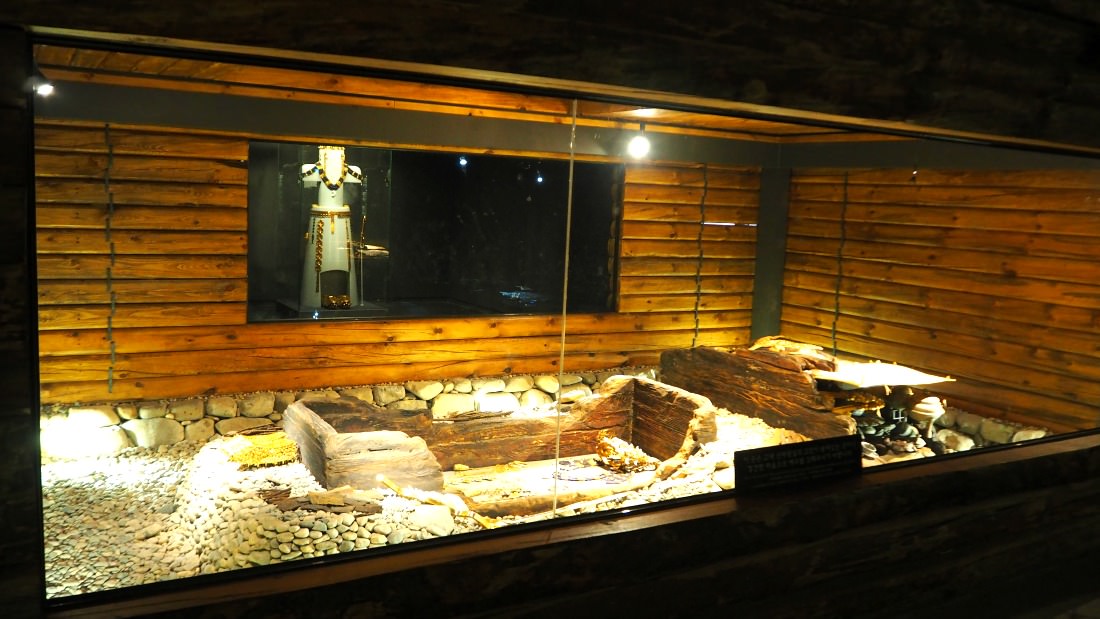 Cheonmachong Tomb's royal coffin with items in Gyeongju City
Cheonmachong Tomb's royal coffin with items in Gyeongju CityGyeonggi-do
Donggureung
The largest and most attractive of the World Heritage-listed royal tombs scattered around Seoul and Gyeonggi-do, Donggureung Royal Tombs, is the burial place of seven kings and ten queens from the Joseon dynasty.
Gyeongju
Underwater Tomb of King Munmu
This small rocky island offshore is the legendary tomb of King Munmu (661-681). This Silla king and unifier of the three kingdoms demanded he should be laid to rest in the East Sea so he could become a dragon and protect his people.
Daegu City
Bullo-dong Tumuli-gongwon
In the north end of the city, Bullo-dong Tumuli-gongwon is an enormous open space covering some 330,000 sq meters. The grassy hillocks that rise like bumps across the valley are tumuli (burial mounds).
Gyeongju City
Seobongchong
At Noseo-dong Tombs, the tomb of Seobongchong was erected between the 4th and 5th centuries. Excavation of the mound yielded a gold crown of Silla origin that now resides at the Gyeongju National Museum.
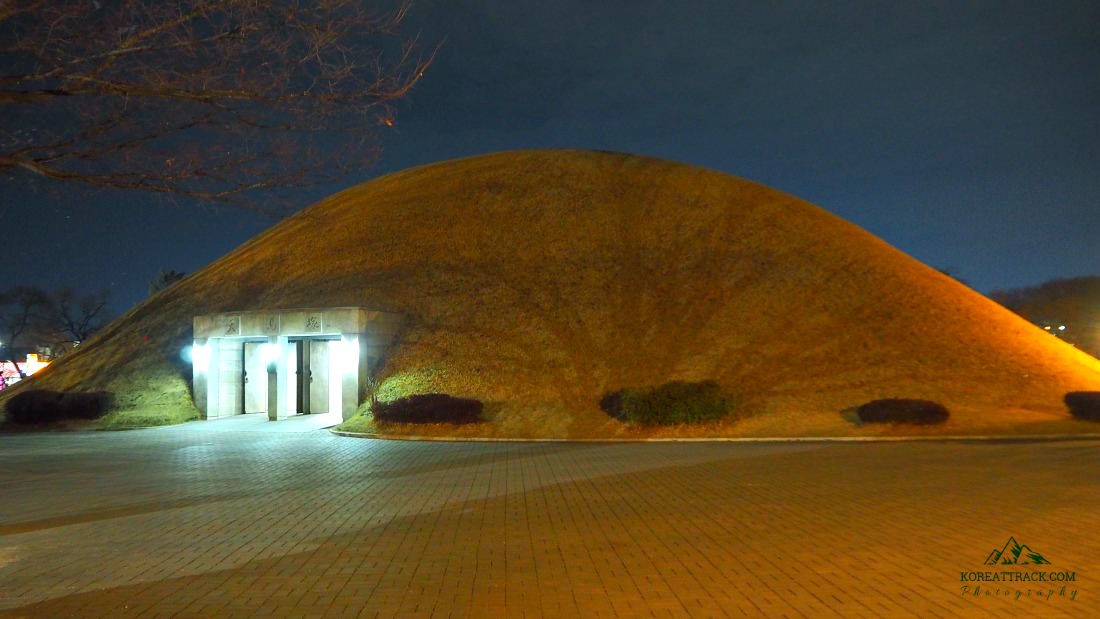 This tomb is called 'cheonmachong', meaning 'heavenly horse' which indicates the flag painted with a heavenly-looking horse found inside this ancient tomb.
This tomb is called 'cheonmachong', meaning 'heavenly horse' which indicates the flag painted with a heavenly-looking horse found inside this ancient tomb.Gyeongju City
Cheonmachong
This is the only tomb at Tumuli-gongwon that is open to visitors. I had an exciting time visiting this one in the evening, which added a more eerie atmosphere.
Gyeongju City
Geumgwanchong
At Noseo-dong Tombs, Geumgwanchong was built between the 4th and 5th centuries.
Gangnam & Southern Seoul
Seonjeongneung
Seonjeongneung Park contains two main burial areas for kings and queens from the Joseon dynasty. The first tomb is for King Seongjong (r 1469–94), who was a prolific author and father.
Gangnam & Southern Seoul
King Seongjong's Tomb
The most notable of the three royal tombs at Seonjeongneung park is that of King Seongjong (r 1469–94), who was a prolific author and father – he had 28 children by 12 wives and concubines.
Gyeongju City
Samneung
The reason to come to this pine grove is to start a hike up Nam-san. On your way up, you may pass the tumuli of three Silla kings. Another tomb, located away from the others, is said to contain King Gyeongae's body.
Gangnam & Southern Seoul
King Jeongjong's Tomb
The
tomb of King Jeongjong (r 1506–44) is one of three royal burial areas
at Seonjeongneung park. He was the second son of King Seongjong and
Queen Jeonghyeon. At this tomb, you can see the full layout and descriptions.
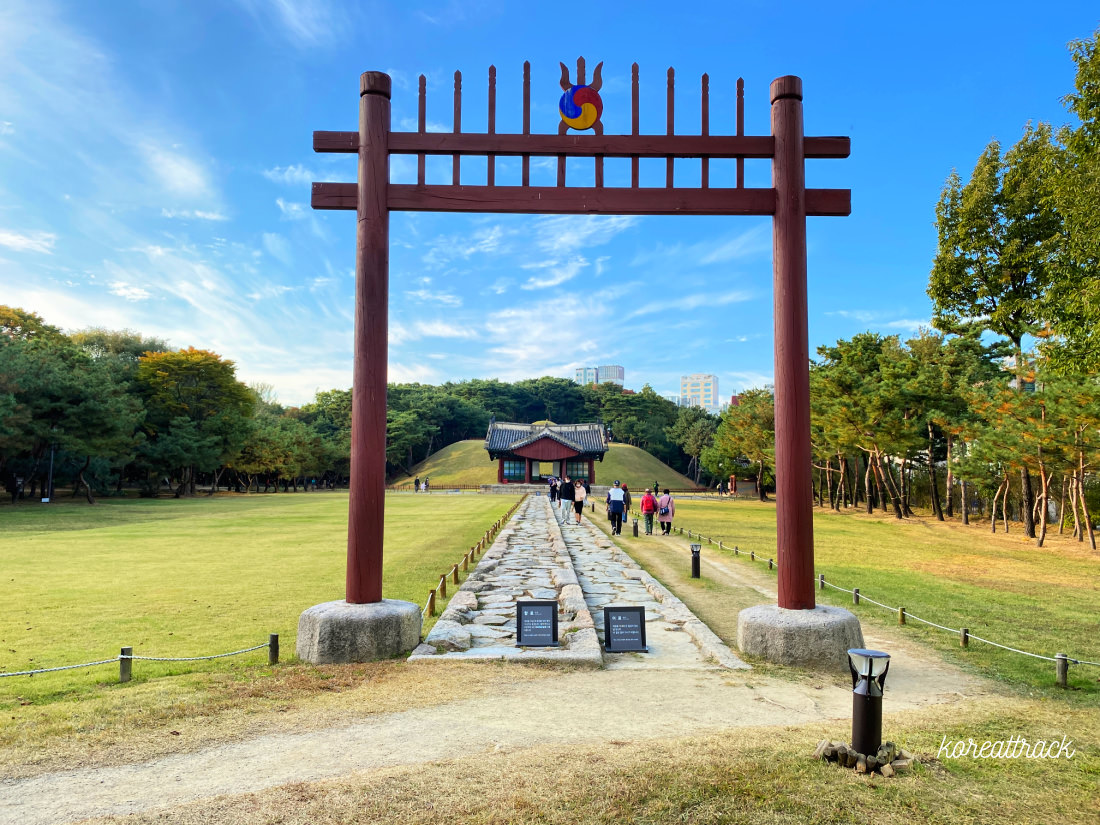 Gate to King Jungjong's tomb (11th ruler)
Gate to King Jungjong's tomb (11th ruler)
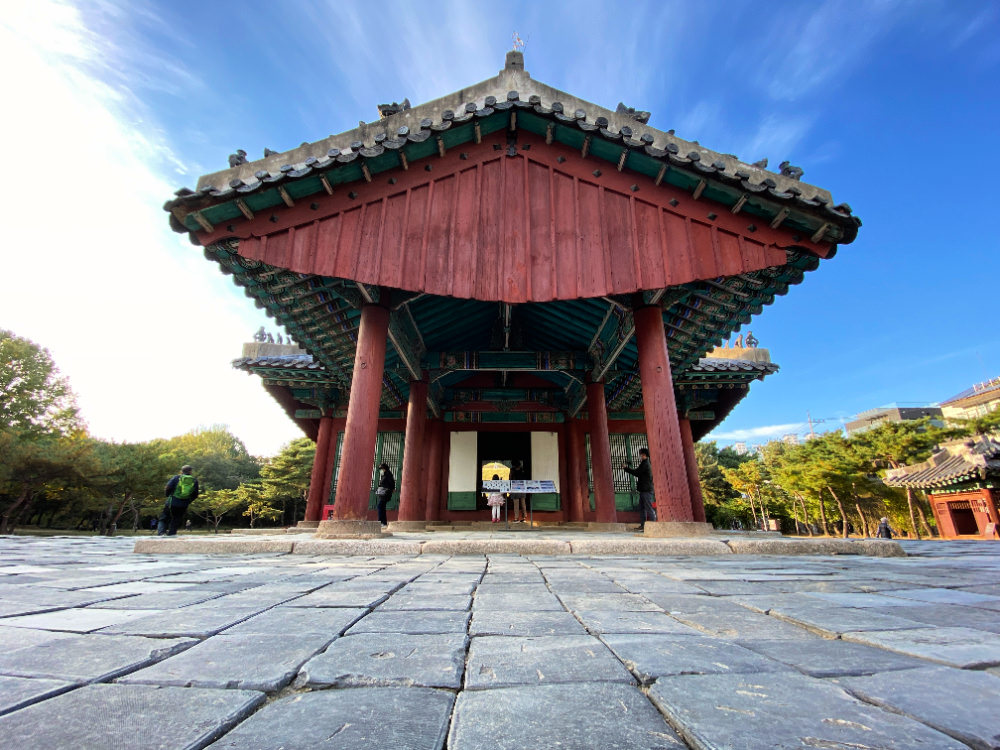 Shrine of King Jungjong's tomb Shrine of King Jungjong's tomb |
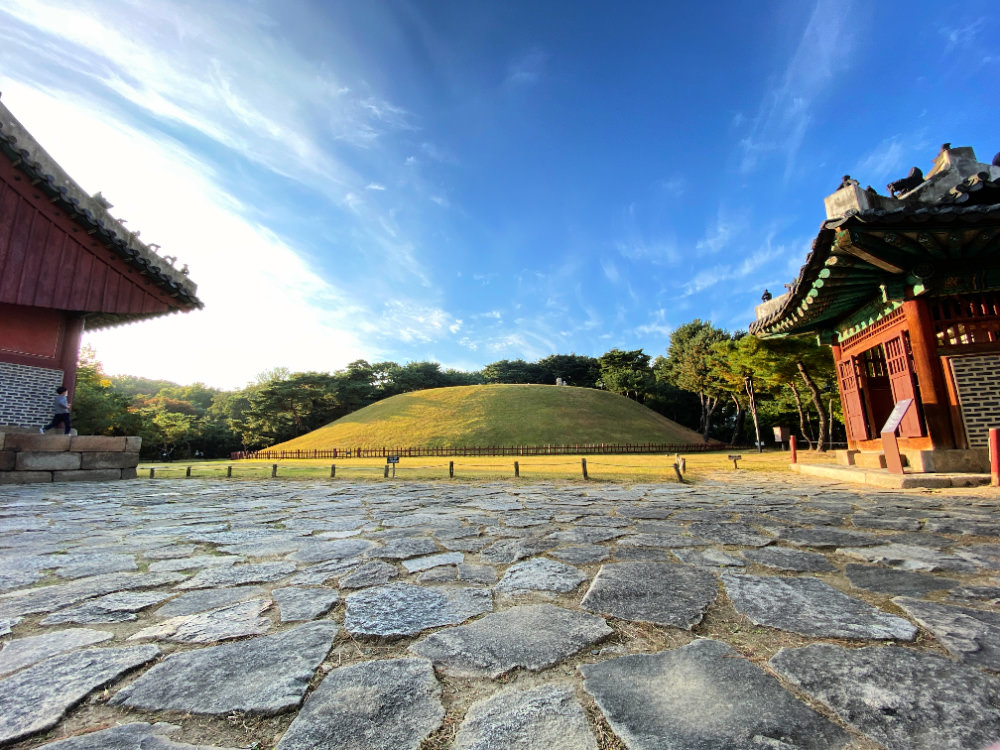 Mound tomb of King Jungjong Mound tomb of King Jungjong |
Dongdaemun & Eastern Seoul
Yeonghwiwon and Sunginwon
Set in a tranquil, well-tended plot, this pair of royal burial mounds dates to the very end of the Joseon dynasty. Yeonghwiwon, the larger of the two, is the tomb of a royal concubine who died in 1911.
Gyeongju City
Tomb of General Kim Yusin
A royal tomb with 12 statues carved with the likeness of the signs of the Chinese zodiac watching over the resting place.
Gangnam & Southern Seoul
Queen Jeonghyeon Wanghu's Tomb
One of three royal tombs at Seonjeongneung park. Queen Jeonghyeon Wanghu was the second wife of King Seongjong.
Gyeongju City
Geumnyeongchong - Across the road from Noseo-dong tombs is this tomb, adjoining Bonghwadae.
Gyeongju City
Gwaeneung Tomb - The tomb of King Wonseong.
This page will be updated with more exciting and accessible tombs and burial sites of the past Korean royal family members.
So, stay tuned to see them here. I hope you have an unforgettable journey. Keep safe, and have fun!
Get Exciting Activities
Book one of our exciting activities today to experience the thrill of a lifetime! Take advantage of this opportunity and secure your spot in advance.
Hotel Map Guide
Find your affordable, accessible, and comfortable hotel in Seoul at Agoda.Com. See the hotel map below...
Hotel Booking Guide
Find affordable and amazing hotels on Agoda.com using the search box below. Book now to enjoy great discounts and save!

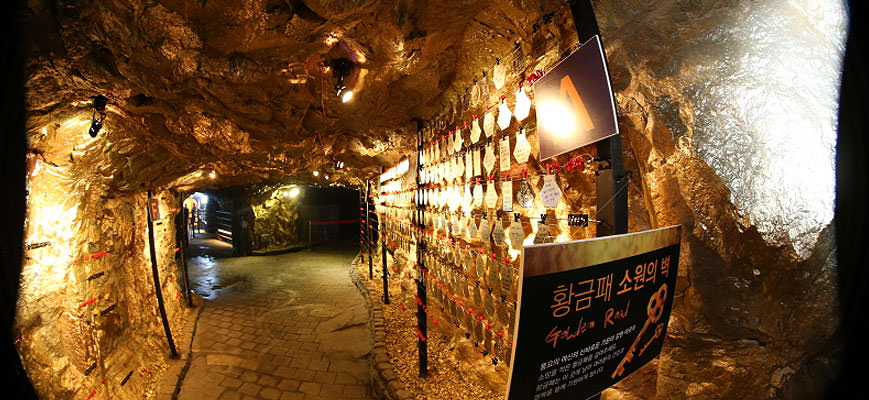
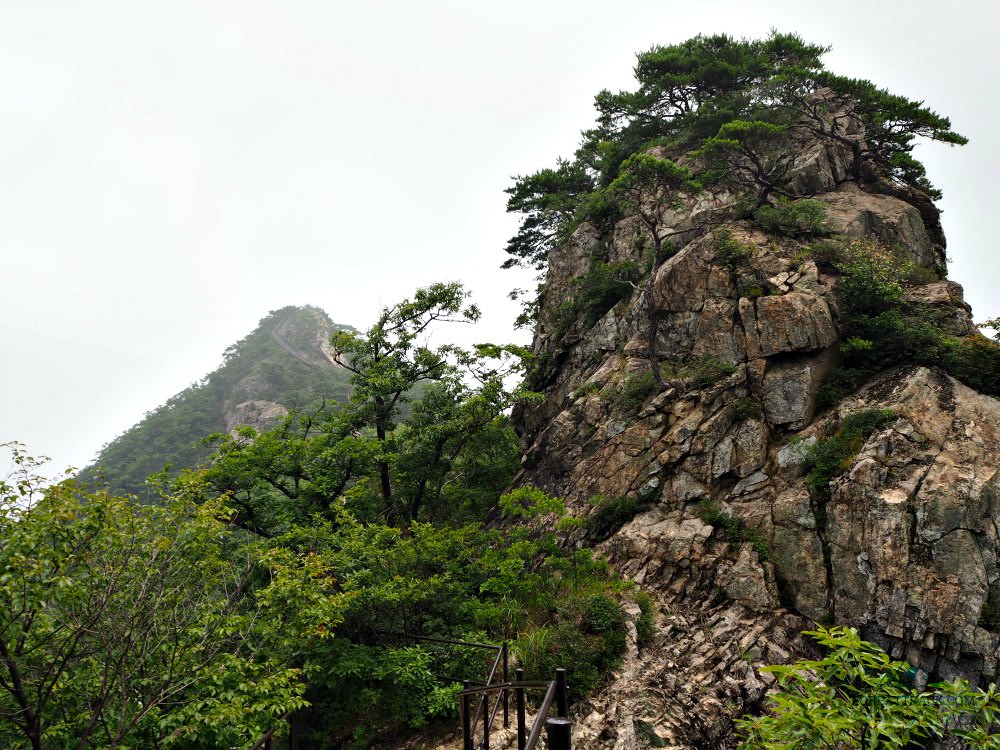




New! Comments
What do you think about this page? Leave me a comment in the box below.